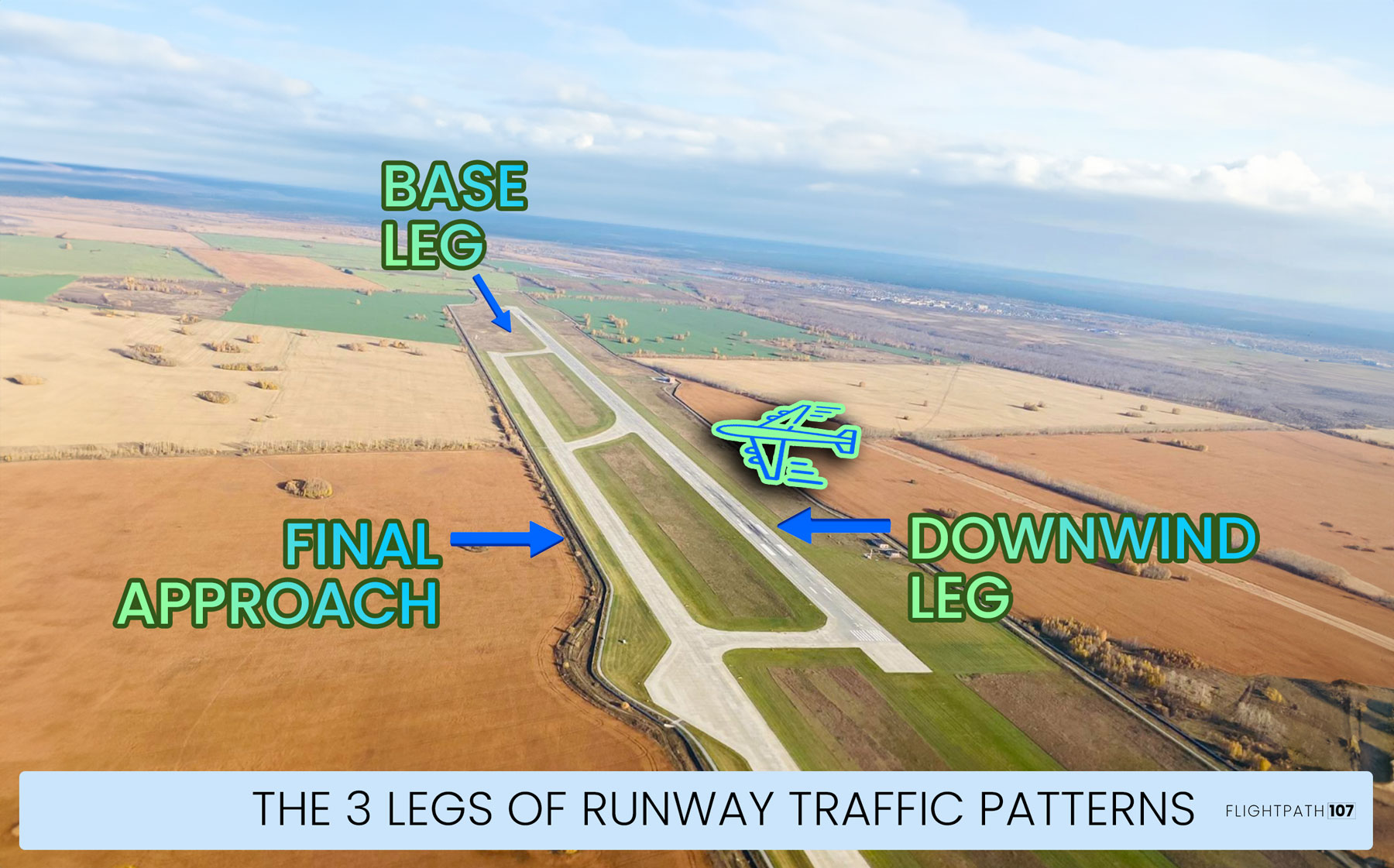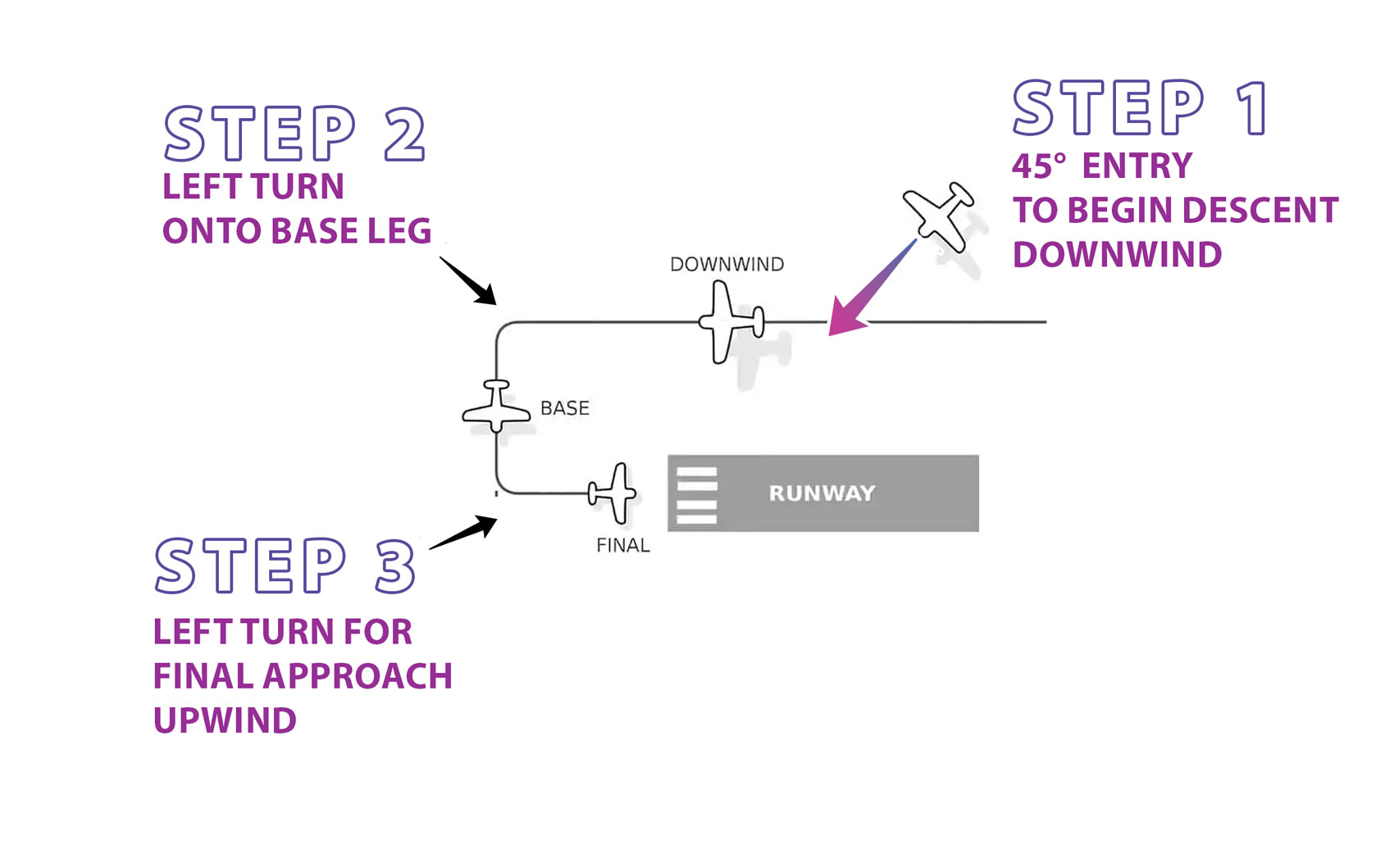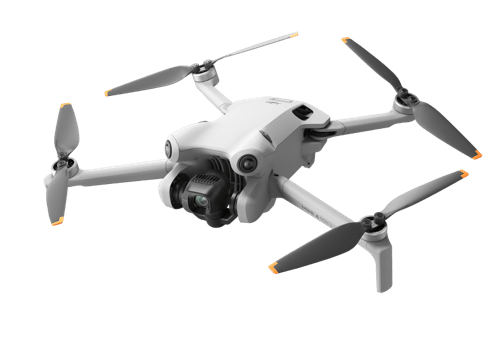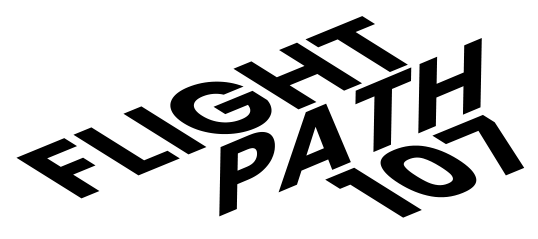Standard Landing
Traffic Patterns
A standard traffic pattern is a set of predictable flight paths that aircraft follow when approaching or departing an airport. It involves a flow of traffic around the runway, with specific legs (directions) for aircraft to fly and clear procedures for entering, navigating, and exiting the pattern.
For most airports, this pattern uses left-hand turns, creating a consistent flow of aircraft around the runway. The process starts with a 45° entry into the downwind leg, followed by a series of turns to position the aircraft for landing.
For drone pilots operating near controlled airspace, it’s especially important to understand standard traffic entry procedures like the 45° approach and left-hand turns.
In this lesson, you’ll learn about:
- How to identify and enter a traffic pattern using the standard 45° angle.
- The role of left-hand turns in guiding aircraft to the runway.
- The three main legs of the traffic pattern: downwind, base, and final approach.
The 3 Legs of a Traffic Pattern
Navigating a traffic pattern has three main parts:
- Downwind Leg: Flying parallel to the runway, opposite the landing direction, to get ready for descent.
- Base Leg: A 90-degree turn that brings the aircraft closer to the runway and lines it up for the final approach.
- Final Approach: The last turn, pointing the aircraft straight at the runway for landing.

3 Phase of
Manned Aircraft Landing

Step 1: Aircraft Enters Traffic Pattern at 45° Angle
The standard way to join the airport traffic pattern is by approaching at a 45-degree angle towards the downwind leg, at the midpoint (middle) of the runway.
The reason the standard entry point is at the midpoint of the runway is it allows for a smooth merge with other aircraft already in the pattern. By entering at an angle, pilots can better see and anticipate other traffic.
(At this stage, the aircraft is still in the air as it enters the runway airspace.)
Step 2: Left Hand Turn onto Base Leg
Once an aircraft enters the traffic pattern, it follows a series of left-hand turns to move through each leg and align with the runway for landing. These turns create a predictable, circular flow around the runway.
Once the aircraft has completed its entry into the first phase, it will make a 90-degree left turn towards the base leg, fly along the base leg, and then make its final 90-degree left hand turn towards the final approach for landing.
Note: While most airports use left-hand patterns, some may have right-hand patterns due to terrain or airspace considerations. Therefore, always check the airport’s chart supplement, where you’ll find airport landing pattern information. For drone pilots, understanding this standard helps you anticipate where aircraft will turn and avoid crossing into these flight paths.
Step 3: The Final Approach: Landing
The final approach is the last leg of the traffic pattern. After making the final 90-degree turn, the aircraft lines up directly with the runway, flying upwind (against the wind). This headwind provides better control and helps slow the aircraft for a smooth touchdown.
For drone pilots, the final approach is a no-fly zone. Aircraft will be at their lowest altitude, with limited room to maneuver.




